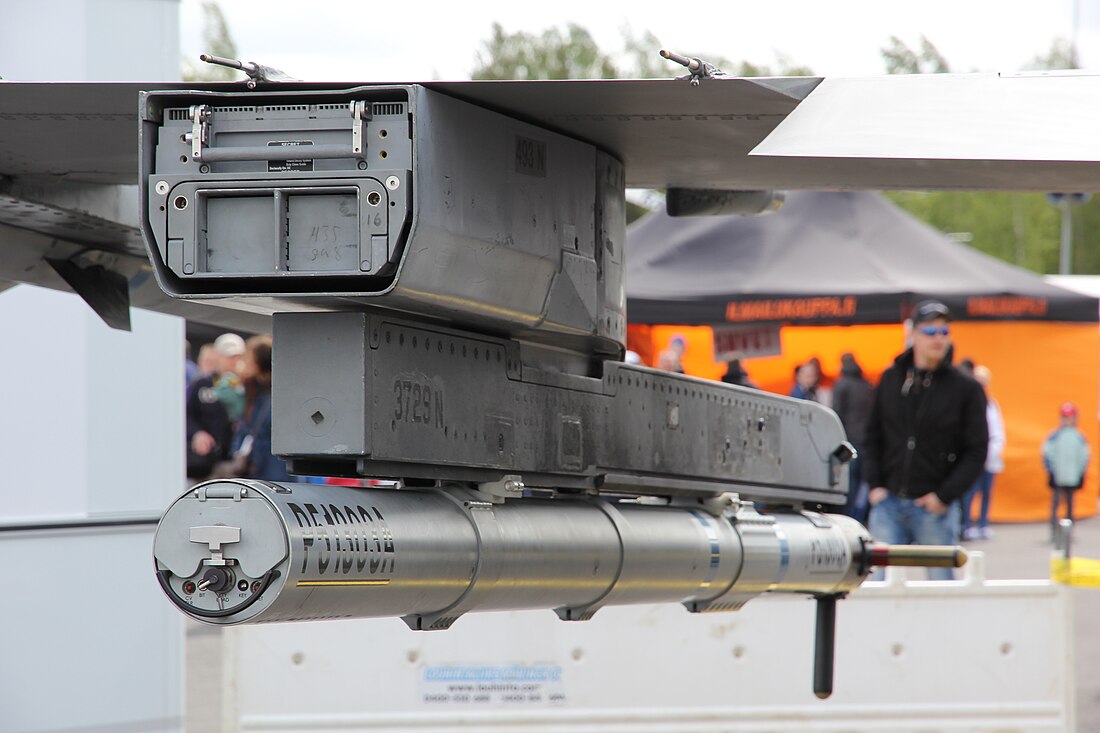Top Qs
Timeline
Chat
Perspective
AN/ALE-50 towed decoy system
Military aircraft towed decoy system From Wikipedia, the free encyclopedia
Remove ads
The AN/ALE-50 towed decoy system is an electronic countermeasure system designed by Raytheon to protect multiple US military aircraft from air-to-air and surface-to-air radar-guided missiles.[1] The ALE-50 towed decoy system is an anti-missile countermeasures decoy used on U.S. Air Force, Navy, and Marine Corps aircraft, and by certain non-United States air forces. The system is manufactured by Raytheon Space and Airborne Systems (now RTX Corporation) at its facility in Goleta, California. The ALE-50 system consists of a launcher and launch controller installed on the aircraft (usually on a wing pylon), with one or more expendable towed decoys. Each decoy is delivered in a sealed canister with a ten-year shelf life.[2]
Remove ads
Description
When deployed, the decoy is towed behind the host aircraft, protecting the aircraft and its crew against RF-guided missiles luring the missile toward the decoy and away from the intended target. In both flight tests and actual combat, the ALE-50 successfully countered numerous live firings of both air-to-air and surface-to-air missiles. U.S. military pilots nicknamed the decoy "Little Buddy".[3] The system requires no threat-specific software, and communicates its health and status to the aircraft over a standard data bus.[4]
In accordance with the Joint Electronics Type Designation System (JETDS), the "AN/ALE-50" designation represents the 50th design of an Army-Navy airborne electronic device for countermeasures ejection/release equipment. The JETDS system also now is used to name all Department of Defense and some NATO electronic systems.
Remove ads
Operational history
The ALE-50 was first delivered in 1996,[3] and is used on the B-1B Lancer and as late as 2020, the F/A-18E/F Super Hornet.[5] The ALE-50 has also been integrated into the next-generation AN/ALQ-184(V)9 ECM pod,[6] creating an integrated threat-protection system capable of being carried on a larger number of platforms.
The expendable decoys' estimated value is $22,000 each. A production run of 1,048 units were delivered through October 2010.[3]
In a September 2014 US$9,414,000 (equivalent to $12,503,920 in 2024) firm-fixed-price delivery order, Raytheon's Electronic Warfare Systems in Goleta was contracted for an additional 226 units of ALE-50 Bravo T3F launchers for U.S. Navy F/A-18 E/F aircraft.[7]
As of 2008, the ALE-50 towed decoy was operational on the F-16 Fighting Falcon, F/A-18E/F Super Hornet, and B-1B Lancer aircraft.[8][9]
Remove ads
See also
Wikimedia Commons has media related to AN/ALE-50.
References
Wikiwand - on
Seamless Wikipedia browsing. On steroids.
Remove ads

